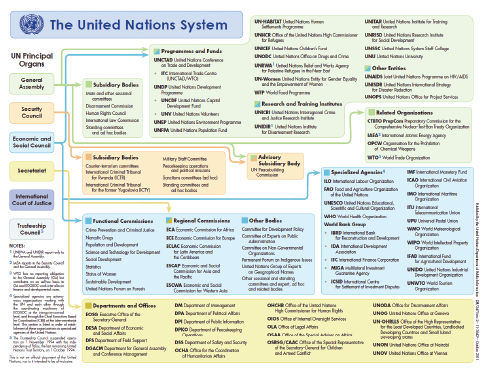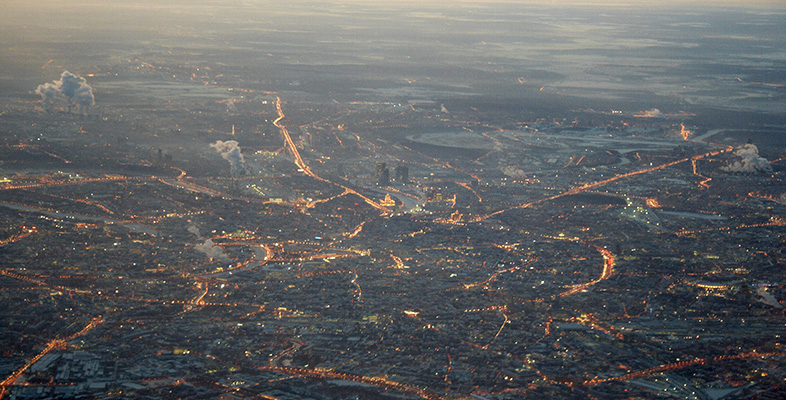9.1 The UN as a system
Figure 7 shows the main United Nations (UN) structures (referred to as ‘Principal Organs’) on the left, and their constituent elements expanded in the colour coded boxes to the right of the diagram. The chart shows some of the hierarchical relationships, governance, connections and responsibilities between different elements of the UN. The chart begins to give a sense of how the UN is organised and, to some extent, functions as an organisation, even if you might not know what each of the different elements does.

But the UN is much more than just the structures and relationships shown here. Figure 7 is a representation – an abstraction – of the UN system. The authors have had to make choices about what to include and exclude from the diagram and have made choices about the boundary of the UN based on various criteria, such as audience and purpose of the diagram. So what is shown is a particular view of the UN.
How would this diagram look if drawn from the perspective of, say, an IT engineer responsible for upkeep of the UN’s computing system, or perhaps an office cleaner within the UN, or perhaps a recipient of the one of the UN’s funding and aid programmes in Africa? Their views of what constitutes the UN organisation system are likely to be very different to the UN system depicted in Figure 7.
However incomplete or partial, Figure 7 does attempt to show how the UN is made up of different parts and how the relationships between them are organised to form a ‘whole’ – the UN system.
